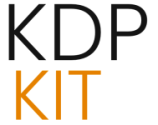Amazon KDP: Navigating the Evolving Landscape of Self-Publishing in 2025

Amazon Kindle Direct Publishing (KDP) continues to be a dominant force in the self-publishing world, offering authors an accessible platform to reach a global audience. As of August 2025, the platform remains a powerful tool for writers, but the landscape is constantly evolving. Authors looking to succeed in 2025 and beyond must stay informed about key trends, platform changes, and effective strategies. This comprehensive guide explores the current state of Amazon KDP, focusing on recent developments, best practices, and what authors need to know to thrive.
The Core of Amazon KDP: Empowering Authors
Launched in 2007, Amazon KDP revolutionized the publishing industry by democratizing the process. It allows authors to upload manuscripts, design covers, and set prices, making their books available worldwide in both digital (eBook) and print formats (paperback and hardcover). This model offers authors significant advantages, including:
- Global Reach: Access to Amazon’s vast customer base across numerous countries and languages.
- No Upfront Costs: Unlike traditional publishing, KDP requires no initial investment for publishing.
- Creative Control: Authors retain full control over their content, pricing, and rights.
- Quick Turnaround: Books can be live on Amazon within days of uploading.
Key Trends and Developments in 2025
The self-publishing market is dynamic, with trends shaping author strategies. In 2025, several key areas are particularly noteworthy:
Royalty Rate Adjustments for Print Books
A significant change impacting authors took effect on June 10, 2025. Amazon KDP adjusted its royalty rates for paperback and hardcover books priced below certain thresholds. Specifically, books priced at or below $9.99 USD (or regional equivalents) now earn a 50% royalty, a decrease from the previous 60%. Books priced above this threshold continue to earn 60%. This change affects authors who price their print books affordably, potentially reducing their earnings unless pricing is adjusted. Amazon cited increasing operational costs as the reason for this adjustment. To mitigate the impact, Amazon also announced reductions in color printing costs for paperbacks in some marketplaces.
The Growing Influence of AI in Publishing
Artificial Intelligence (AI) is rapidly transforming the publishing landscape. In 2025, AI tools are being leveraged for various aspects of book creation, from brainstorming and content generation to editing and cover design. Amazon has responded by implementing new guidelines requiring authors to disclose the use of AI-generated content in their books, emphasizing transparency. While AI can streamline processes and offer creative assistance, authors are advised to review and personalize AI-generated content to maintain uniqueness and quality.
Evolving Algorithm and Discoverability
Amazon’s algorithm is shifting from a purely SEO-based system to one that prioritizes performance. This means factors like consistent sales, positive reviews, and reader engagement are crucial for a book’s visibility. Authors need to focus on creating high-quality, compelling books that resonate with readers, ensuring their titles and covers are attractive and clickable. Understanding and adapting to these performance-based metrics is key to organic discoverability.
Genre Popularity and Niche Exploration
Certain genres continue to dominate the market, while niche exploration offers opportunities for authors to stand out. Popular genres include:
- Fiction: Romance, Thriller/Mystery, Fantasy, Science Fiction, and Young Adult (YA).
- Non-Fiction: Self-Help/Personal Development, Health & Wellness, Business/Entrepreneurship, and Finance.
Authors are also finding success by delving into specific sub-niches within these broader categories, such as “curvy girls” romance or “ADHD parenting” non-fiction. Diversifying book offerings, including low-content books like journals, planners, and activity books, is also a recommended strategy for building multiple income streams.
Category Selection Updates
Amazon KDP has updated its interface for selecting book categories, limiting authors to three categories per title. The system is now more aligned with the actual store, and authors can set age ranges for children’s and YA books directly, eliminating the need for customer support intervention for category changes.
Strategies for Success on Amazon KDP in 2025
To navigate the competitive KDP landscape and achieve success, authors should adopt a strategic approach:
Prioritize Quality Content and Professionalism
The foundation of any successful book is high-quality content. This includes thorough research, excellent writing, and professional editing. For non-fiction, authenticity and expertise are paramount. Investing in professional editing and cover design significantly enhances a book’s credibility and sales potential.
Master Metadata and Discoverability
Optimizing metadata—including titles, descriptions, and keywords—is crucial for discoverability. Authors should use relevant keywords strategically within their titles, subtitles, and descriptions to improve their book’s ranking in Amazon’s search results.
Develop a Robust Marketing and Branding Strategy
Marketing is not an afterthought; it’s essential for KDP success. Authors should leverage Amazon Ads, social media promotion, and email list building to connect with readers. Building a strong author brand with consistent cover design and a unique voice is vital for long-term recognition and repeat purchases.
Leverage AI Ethically and Effectively
AI tools can be powerful allies in content creation, brainstorming, and market research. However, authors must use AI ethically, ensuring transparency by disclosing AI-generated content and maintaining human oversight for quality and originality.
Build a Diverse Book Catalog
Relying on a single book or genre can be risky. Authors are encouraged to diversify their offerings by creating multiple books, exploring different formats (eBooks, paperbacks, hardcovers), and venturing into various niches. This approach helps mitigate risks associated with market shifts and competition.
Understand and Adapt to Royalty Changes
Authors must be aware of the recent royalty adjustments for print books and adjust their pricing strategies accordingly. Pricing books strategically above the $9.99 threshold can help maintain the higher royalty rate.
Focus on Reader Engagement and Reviews
Positive reviews are critical for building credibility and influencing purchasing decisions. Authors should encourage readers to leave reviews, while adhering to Amazon’s guidelines, which prohibit requiring reviews or offering compensation for them.
Treat KDP as a Business
Sustainable success on Amazon KDP requires a business-minded approach. This involves setting clear goals, investing in quality, understanding market trends, and consistently refining strategies. Building systems for publishing, marketing, and audience growth is key to scaling income.
Challenges and Considerations
Despite its advantages, KDP presents challenges:
- High Competition: The platform hosts millions of books, making visibility a significant hurdle.
- Marketing Responsibility: Authors are largely responsible for their own marketing efforts.
- Exclusivity Requirements: Programs like Kindle Unlimited require exclusivity, which may not suit all authors.
Conclusion
Amazon KDP remains a vital platform for authors in 2025, offering unparalleled opportunities for self-publishing and global reach. While the platform continues to evolve with changes in royalty structures, the increasing integration of AI, and shifts in the algorithm, authors who prioritize quality, strategic marketing, niche exploration, and adaptability are well-positioned for success. By understanding these trends and implementing best practices, authors can effectively navigate the KDP landscape and build a sustainable career in self-publishing.





